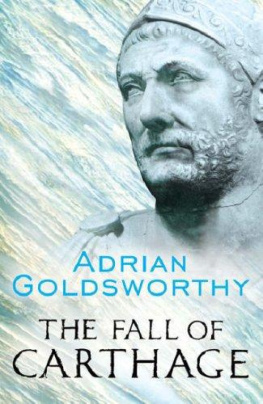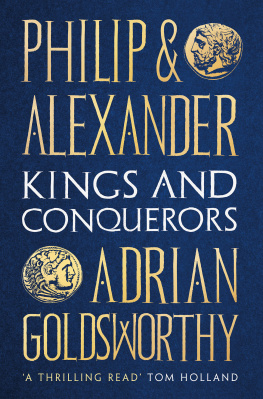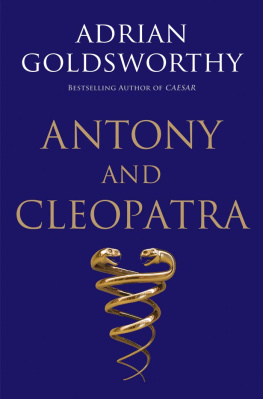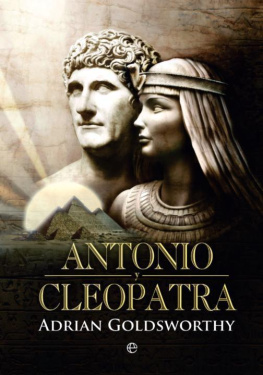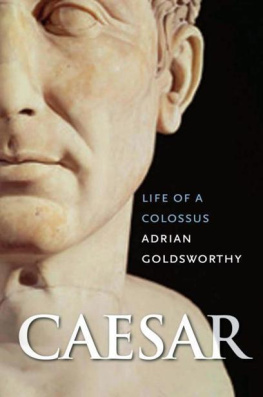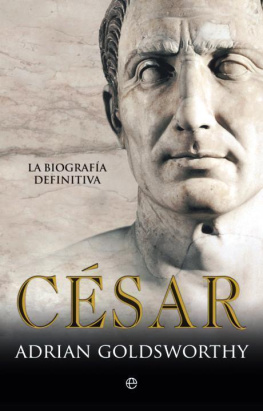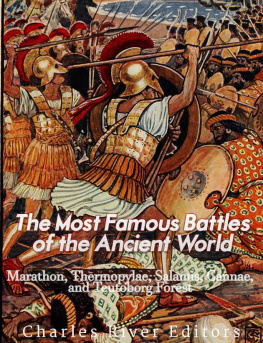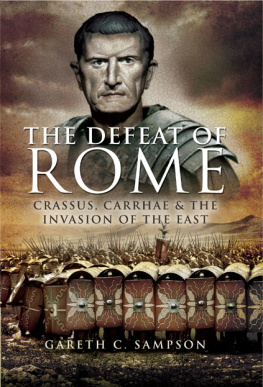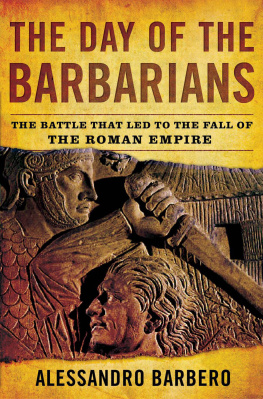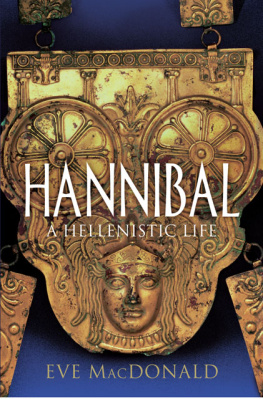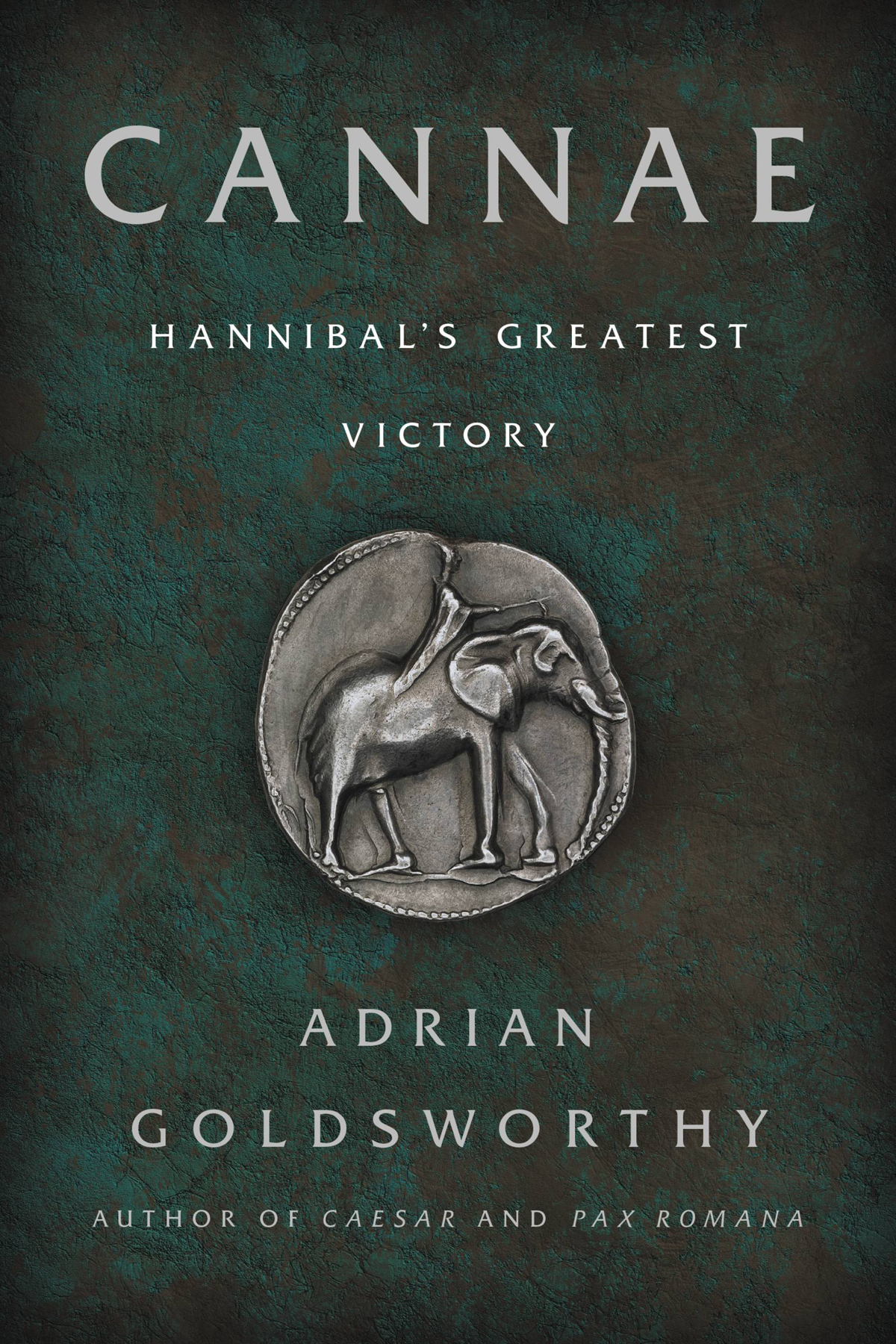M ANY FAMILY MEMBERS and friends contributed to the final form of this book. I must pay particular thanks once again to Ian Hughes who read and commented on successive versions of the manuscript. Others who greatly enhanced the clarity of the final text include Dr Hugh Deeks and Averil Goldsworthy. Conversations over several years and with many other people have helped to modify and refine my ideas about the battle itself and the nature of combat in this period. There are too many to mention them all, but I ought to thank in particular Professor Philip Sabin and Dr Louis Rawlings.
In addition, I must thank the Series Editor, Professor Richard Holmes, for his thought-provoking comments on an earlier draft of the text. Finally, praise should also go to Keith Lowe for his continued efforts.
O N 2 AUGUST 216 BC the Carthaginian General Hannibal won one of the most complete battlefield victories in history. Outnumbered nearly two to one, his heterogeneous army of Africans, Spaniards and Celts not merely defeated, but virtually destroyed the Roman army opposing them. By the end of the day, nearly 50,000 Roman and Allied soldiers lay dead or were dying in an area of a few square kilometres, whilst between ten and twenty thousand more were prisoners. Less than 20% of one of the largest armies ever fielded by the Roman State survived to reform over the next few weeks. Cannae became the yardstick by which the Romans measured later catastrophes, but only one or two defeats in their history were ever judged to have been as bad. The scale of the losses at Cannae was unrivalled until the industrialised slaughter of the First World War.
Most battles from the Ancient World are now all but forgotten, for military as well as civil education has ceased to be based fundamentally on the Classics. Yet Cannae is still regularly referred to in the training programmes of todays army officers. Hannibals tactics appear almost perfect, the classic example of double envelopment, and ever since many commanders have attempted to reproduce their essence and their overwhelming success. Nearly all have failed. Cannae was the largest in a series of defeats Hannibal inflicted on the Romans, but, though he never lost a major engagement in Italy, eventually he was forced to evacuate his army and Carthage lost the war. The genius of his tactics at Cannae should not obscure the stages of the battle when things could easily have gone the other way and a great Roman victory resulted. Hannibal won the battle through not only his dynamic leadership and the high quality of his army, but also because of a good deal of luck. Cannae was not an exercise in pure tactics, but, like all battles, a product both of the military doctrines and technology of the time and the peculiar circumstances of a specific campaign.
The aim of this book is to place Cannae firmly within the perspective of the Second Punic War and the nature of warfare in the third century BC. The events of this period are poorly recorded in comparison with more recent conflicts, and no official documents survive from either side for the Cannae campaign. Instead we have the narratives of historians, written anytime from seventy to several hundred years after the events they describe. Frequently these sources contradict one another, or fail to tell us things we would wish to know, and so there are many aspects of the campaign and battle which cannot be reconstructed with absolute certainty. Two accounts provide us with the greater part of our information, and it is worth briefly considering these.
The earliest and best was written by the Greek historian Polybius in the second half of the second century BC. Polybius was a one of a group of hostages sent to Rome after the Third Macedonian War (172-168 BC). He became an intimate of Scipio Aemilianus, the grandson of one of the Roman commanders at Cannae, following him on campaign in the Third Punic War (149-146 BC) and witnessing the final destruction of Carthage. Polybius produced a Universal History describing events throughout the Mediterranean down until his own day, and its main theme was to explain for Greek audiences how Rome had so quickly emerged as the dominant world power. His narrative is generally sober and analytical, and he provides us with by far the best description of the Roman army. However, whilst willing to criticise the Romans in general, he is invariably sympathetic to all of the ancestors by blood or adoption of Scipio Aemilianus. Polybius account survives intact for the battle itself, but then breaks off and only small fragments survive for the remaining years of the war.
The other main account was written in Latin by Livy in the late first century BC as part of his History of Rome from the Foundation of the City. His narrative is fiercely patriotic, stylistically elegant and intensely dramatic, but far less critically rigorous than that of Polybius. Livy used the Greek historian as one of his sources, but also drew upon a range of other traditions, most very favourable to the Romans and many celebrating the deeds of particular aristocratic families. He is useful because he provides information about some things, for instance Roman elections and politics, which are passed over very briefly by Polybius. In addition Livys narrative survives intact for the entire Second Punic War, making him our main source for the aftermath of the battle.
Other sources provide some additional information, but all were written considerably later. Appian wrote a Roman history around the turn of the first and second centuries AD, but his account of Cannae makes very little sense and is of dubious reliability. Around the same time, Plutarch produced a collection of biographical Lives, some of which include accounts of the period. Such late sources need to be used with extreme caution, but it is possible that they preserved a few accurate details absent from the surviving portions of our earlier sources.
A T THE START of the third century BC the Republic of Carthage was the wealthiest and most powerful state in the Western Mediterranean. It had been founded, probably in the late eighth century, by Phoenician settlers from Tyre on the coast of modern-day Lebanon. The Phoenicians were the great maritime traders of the ancient worldthe Romans knew them as


